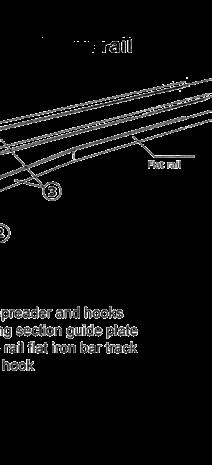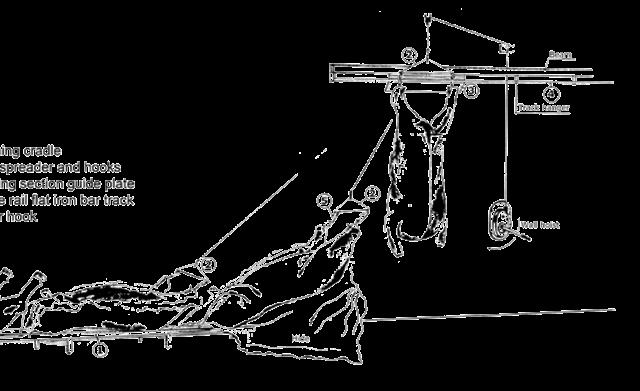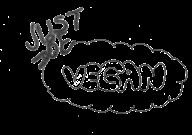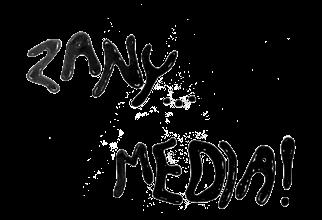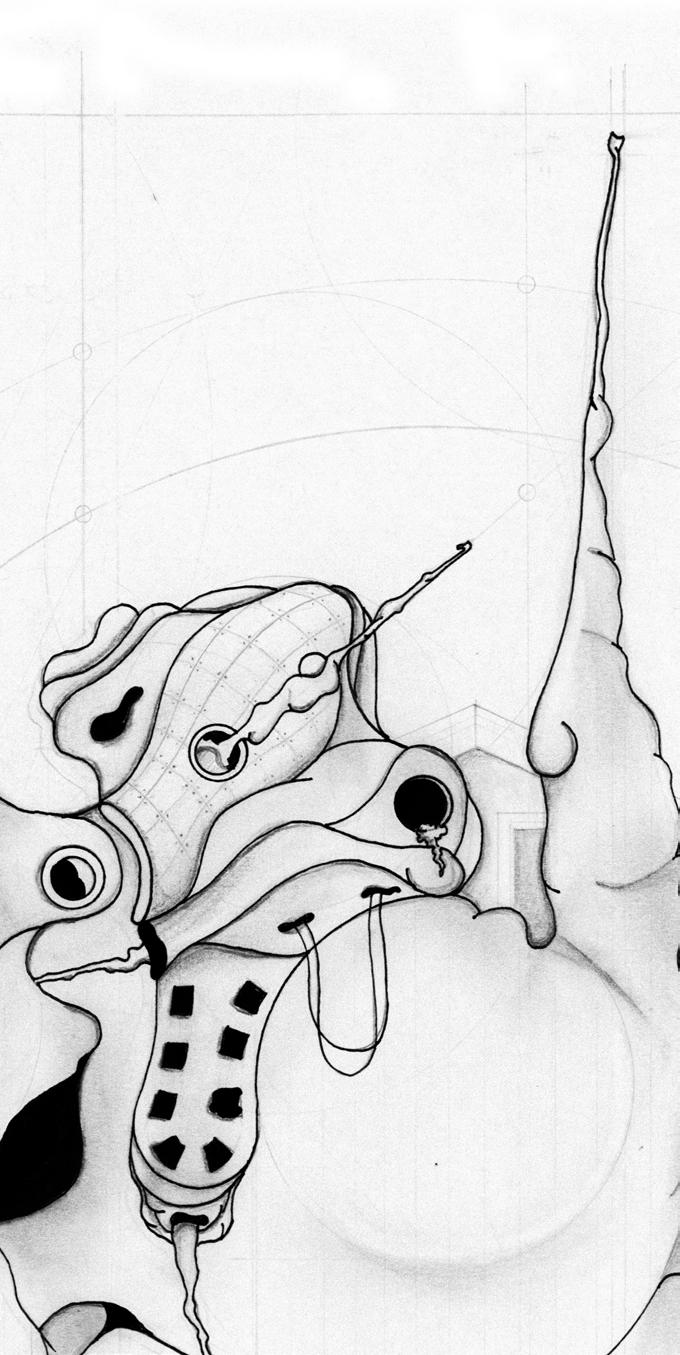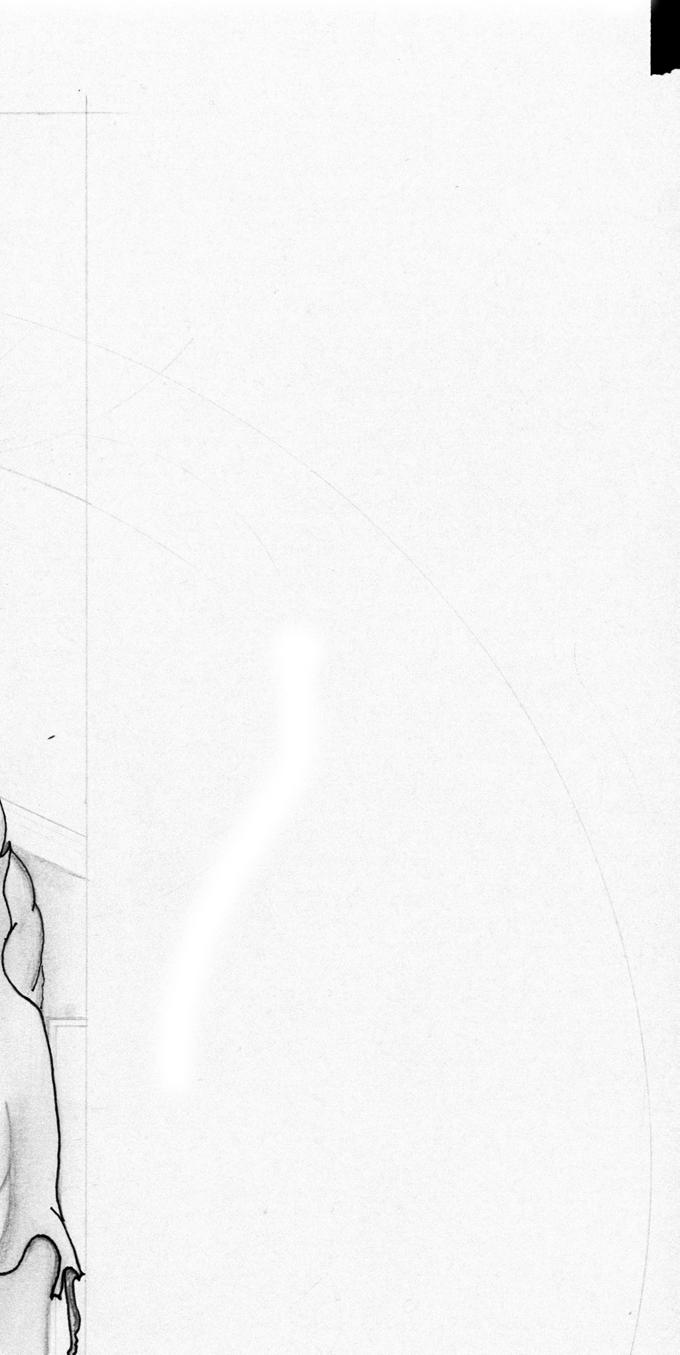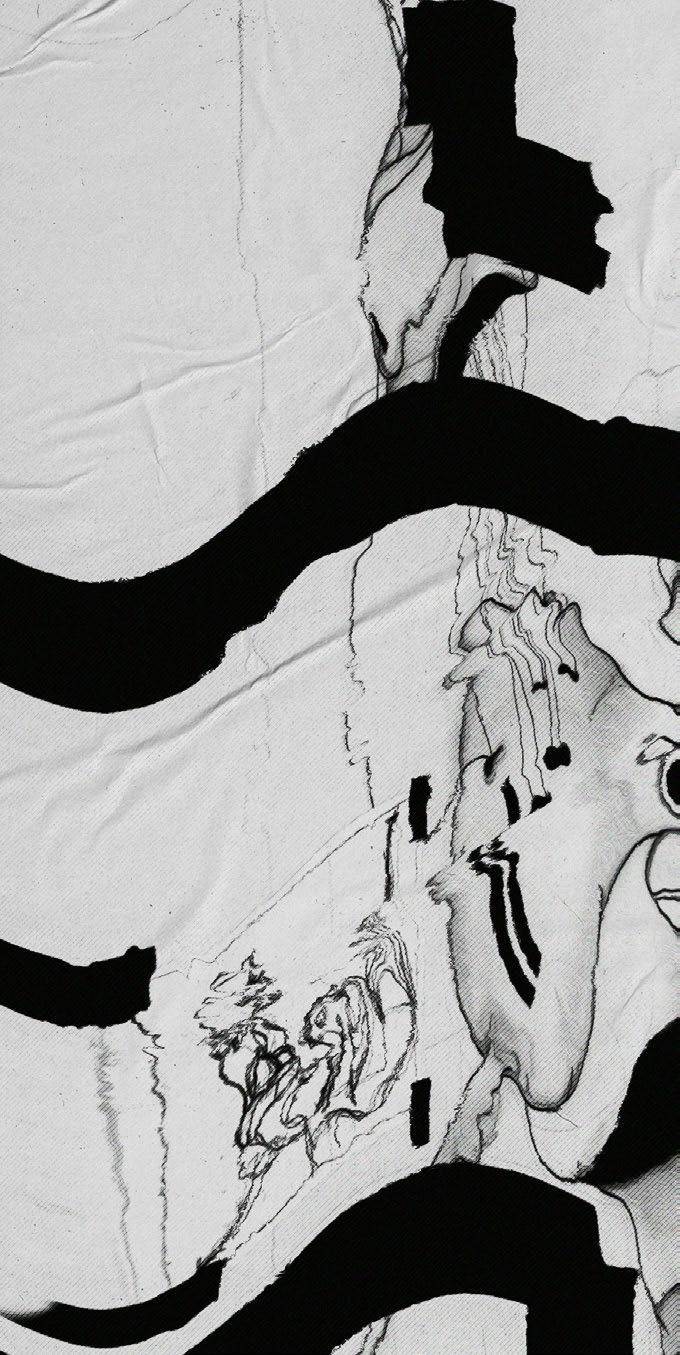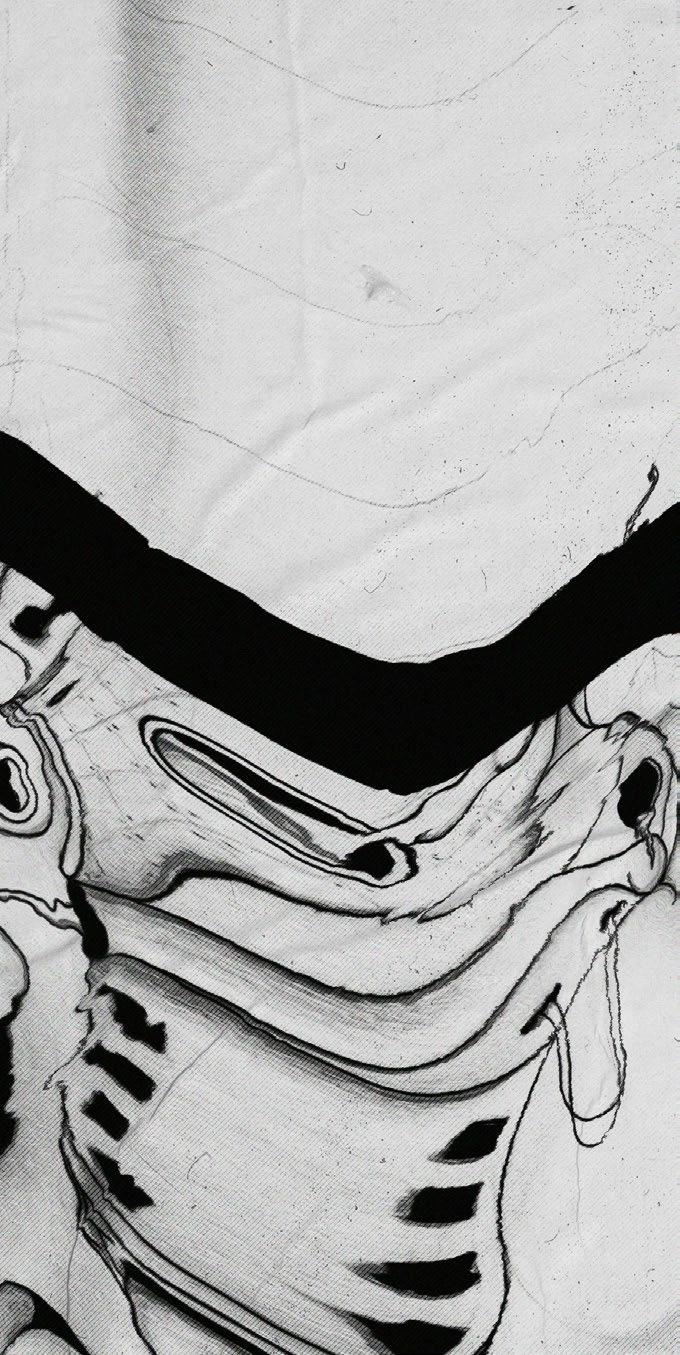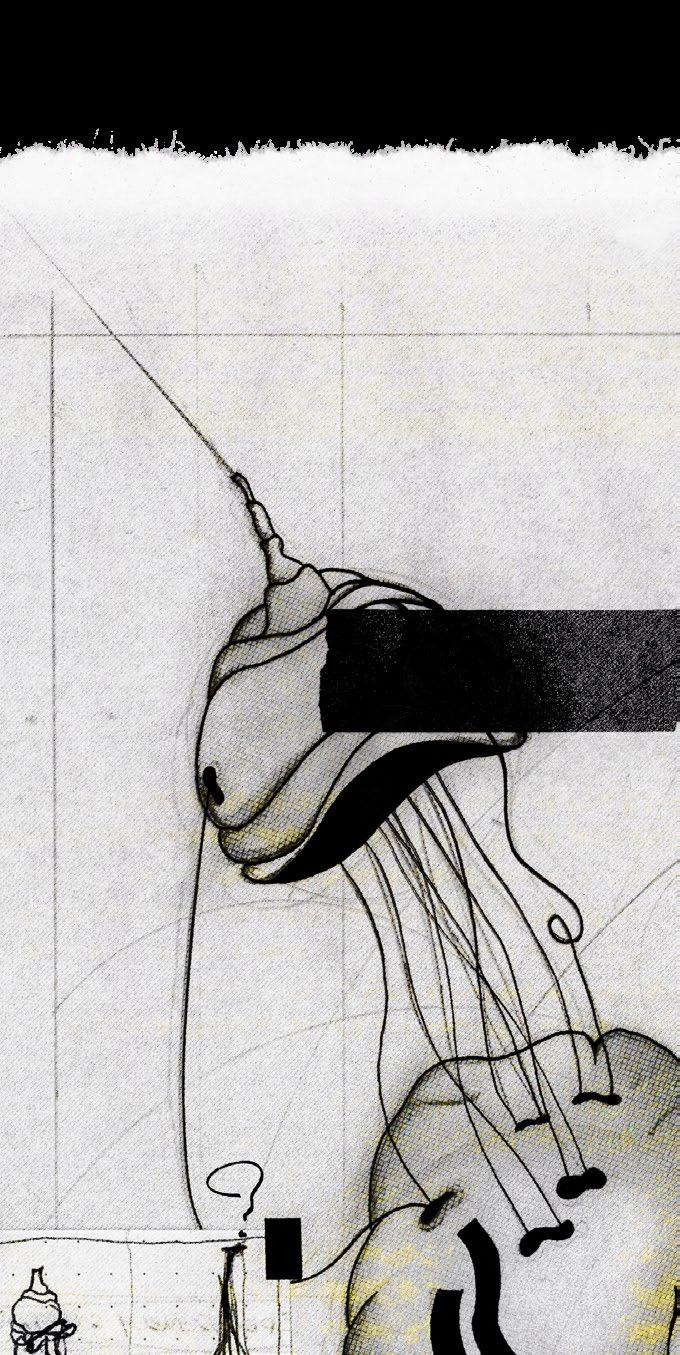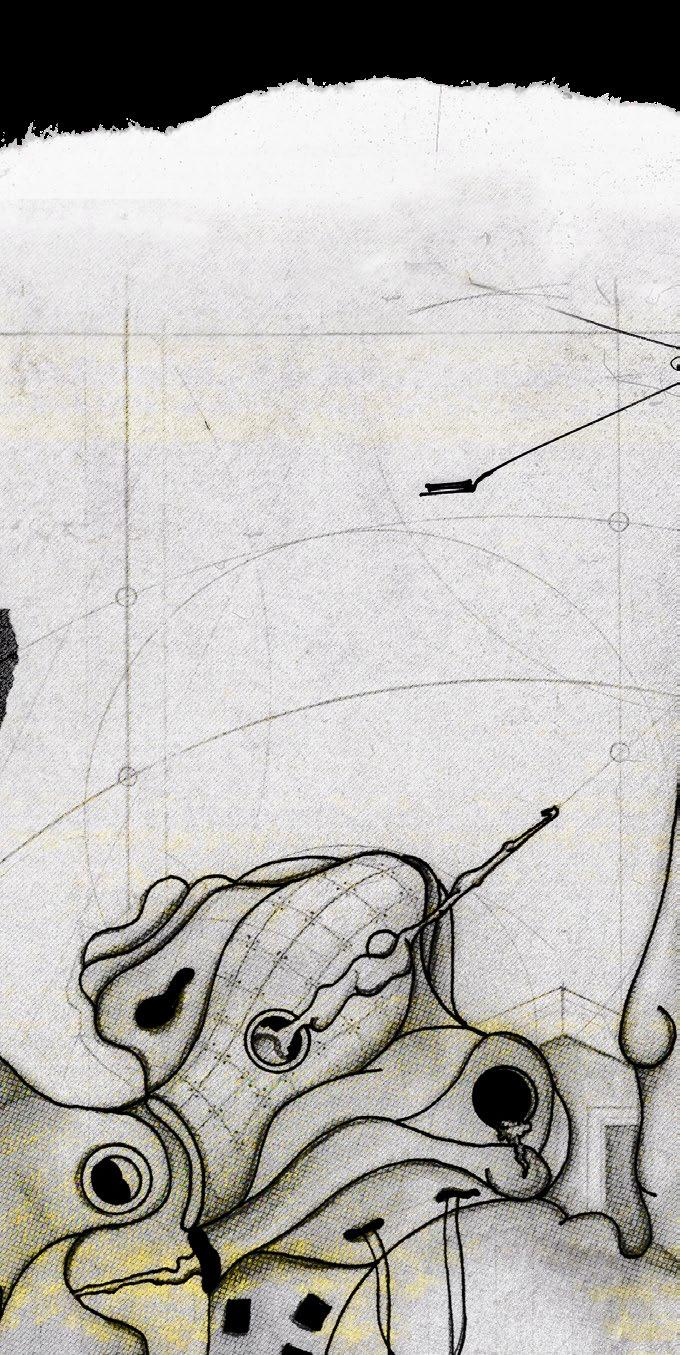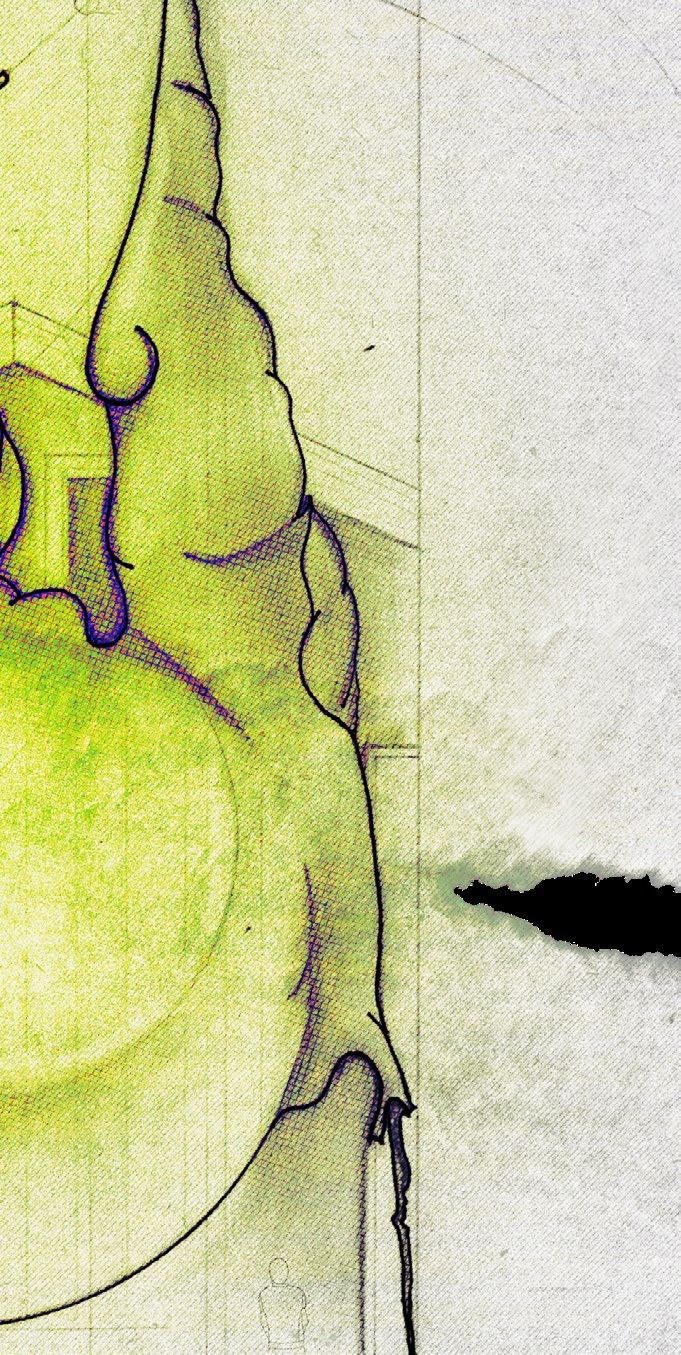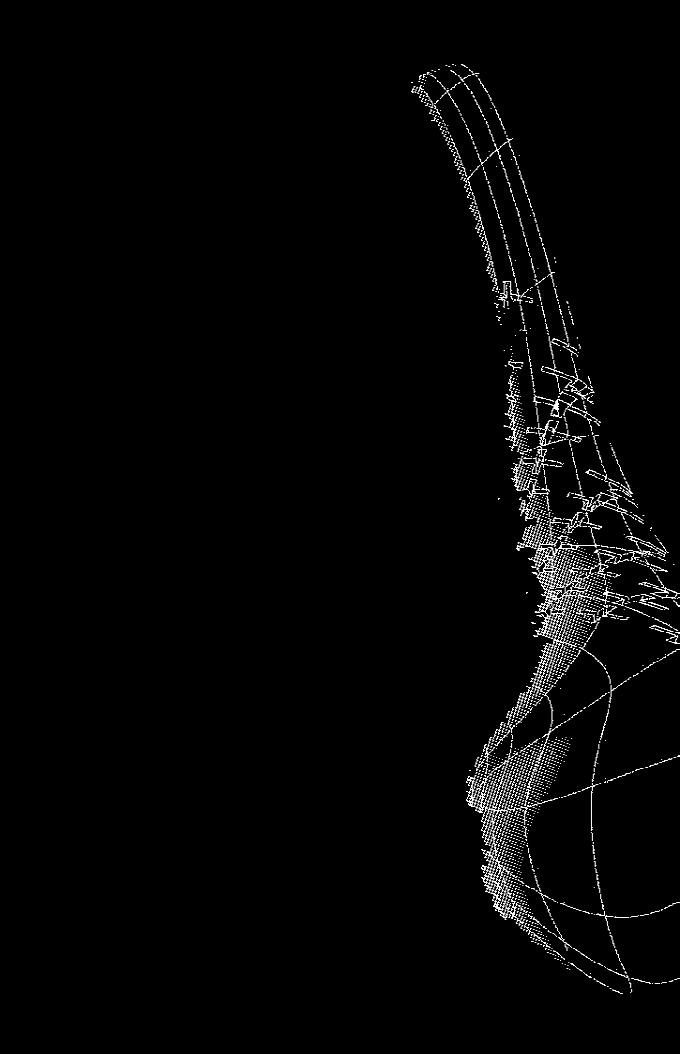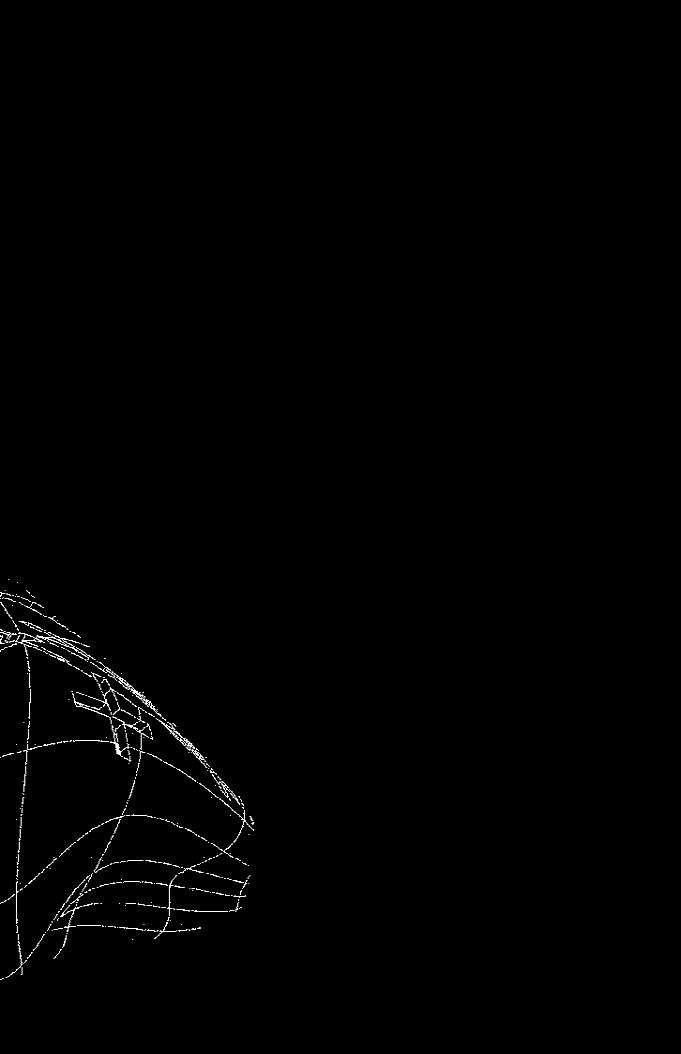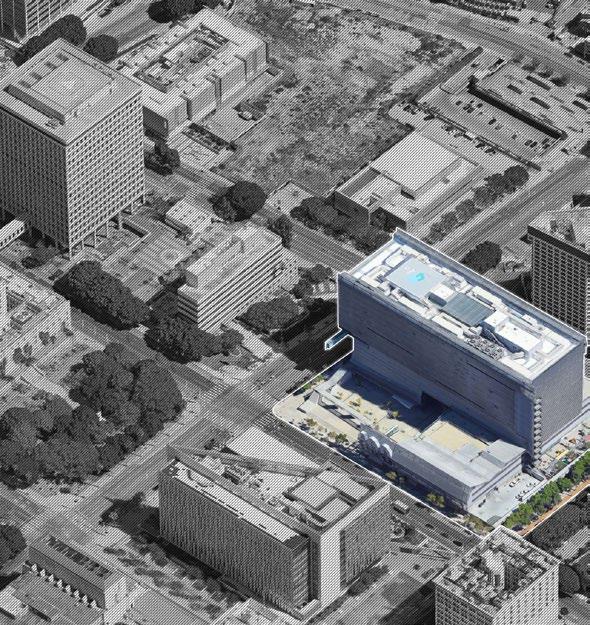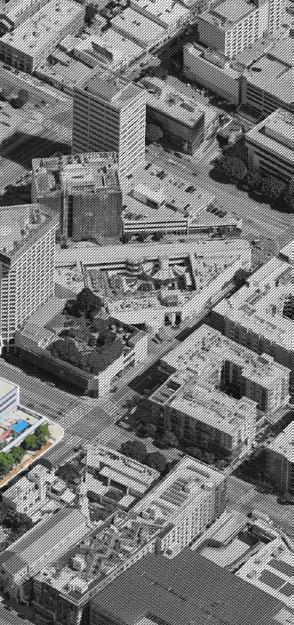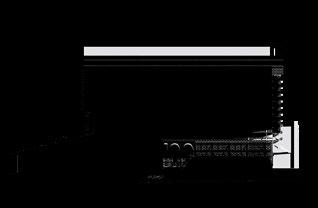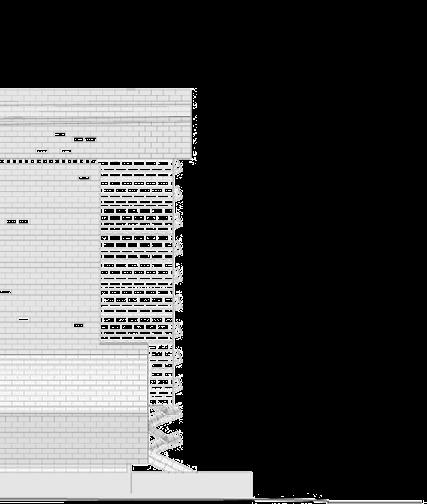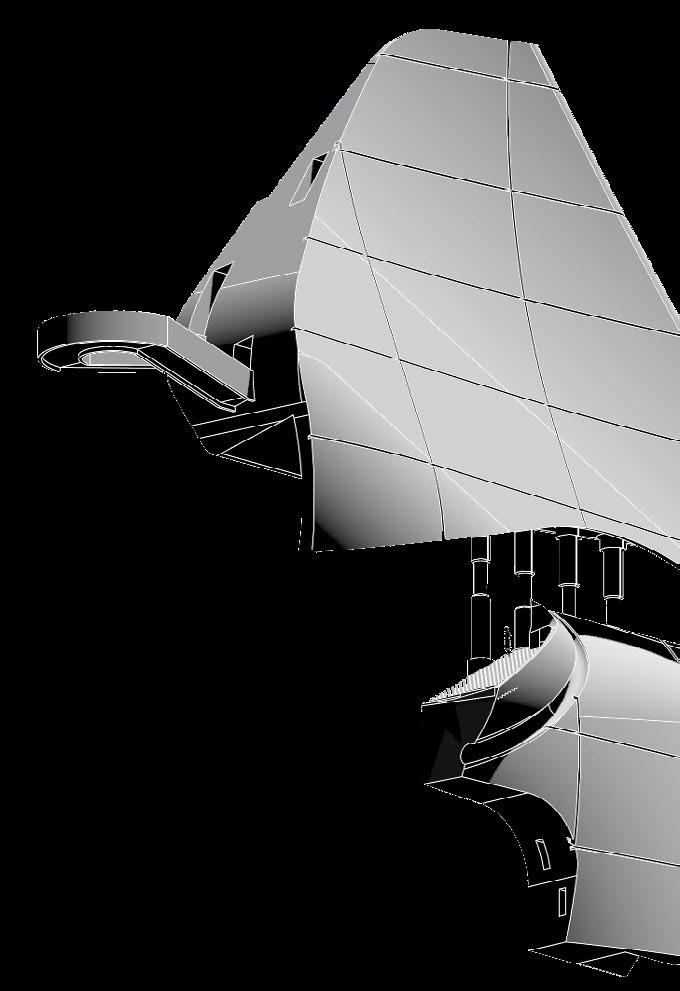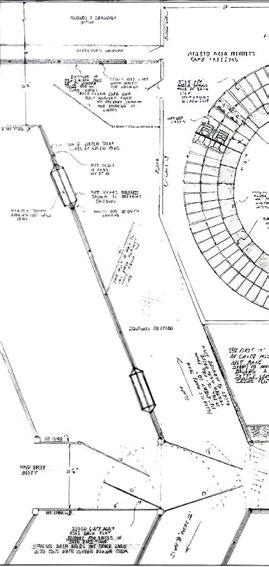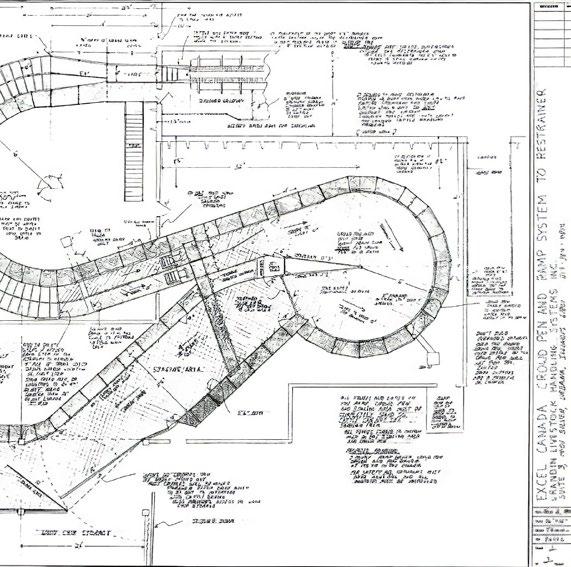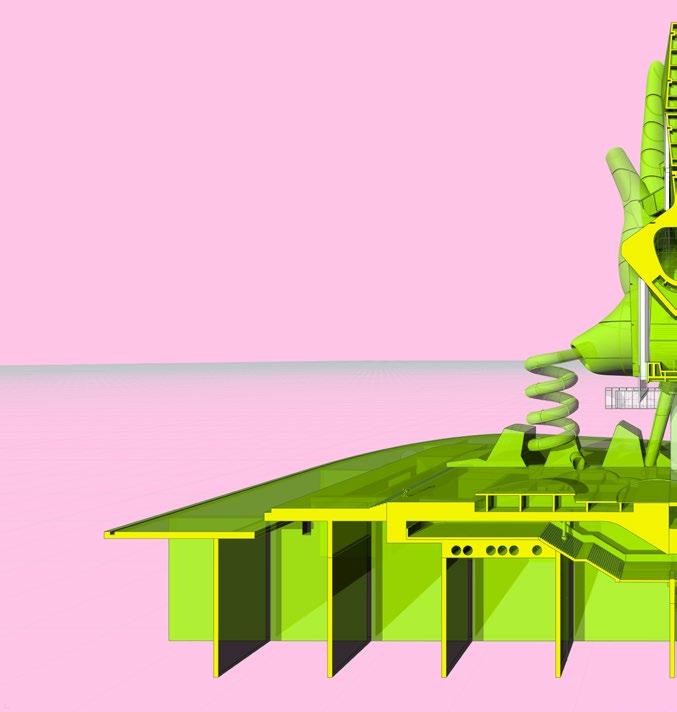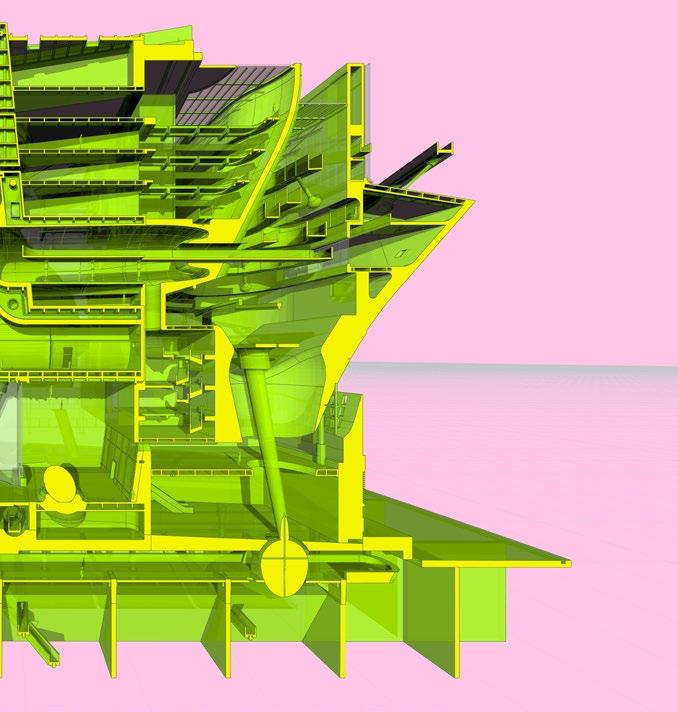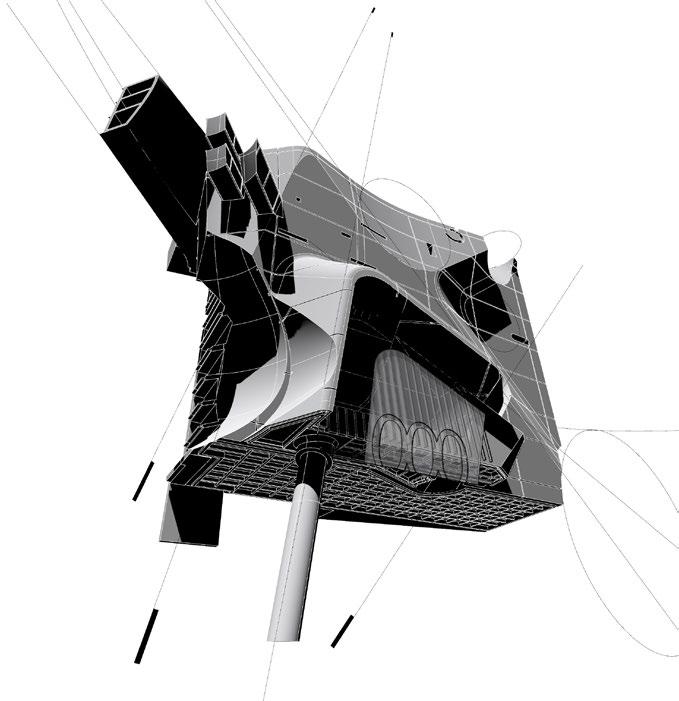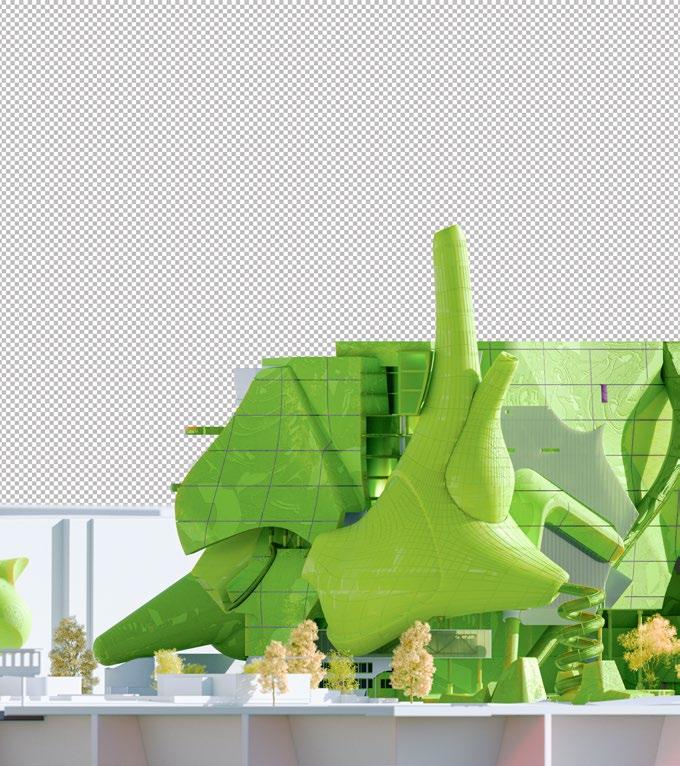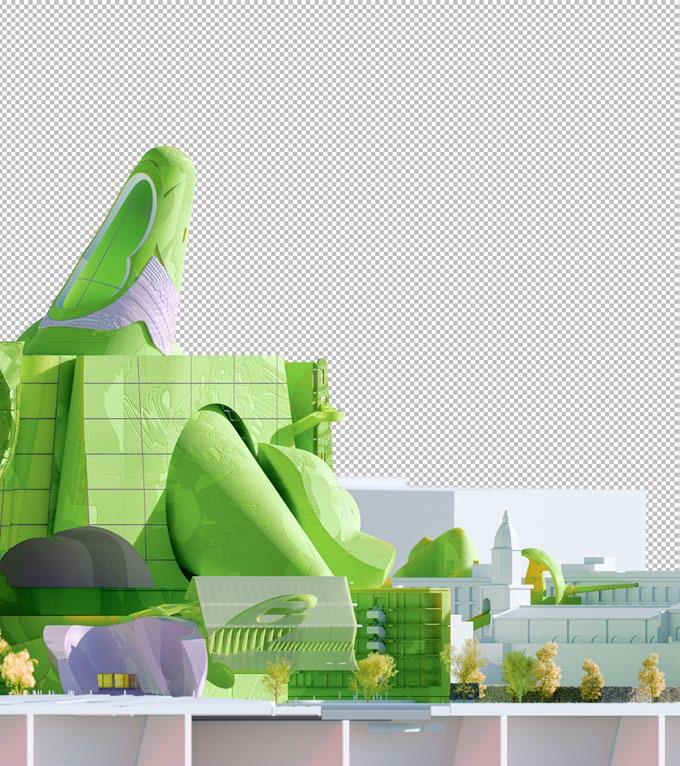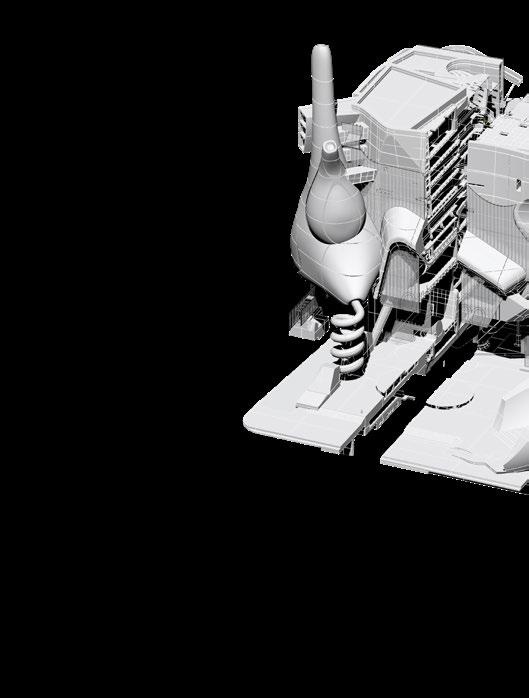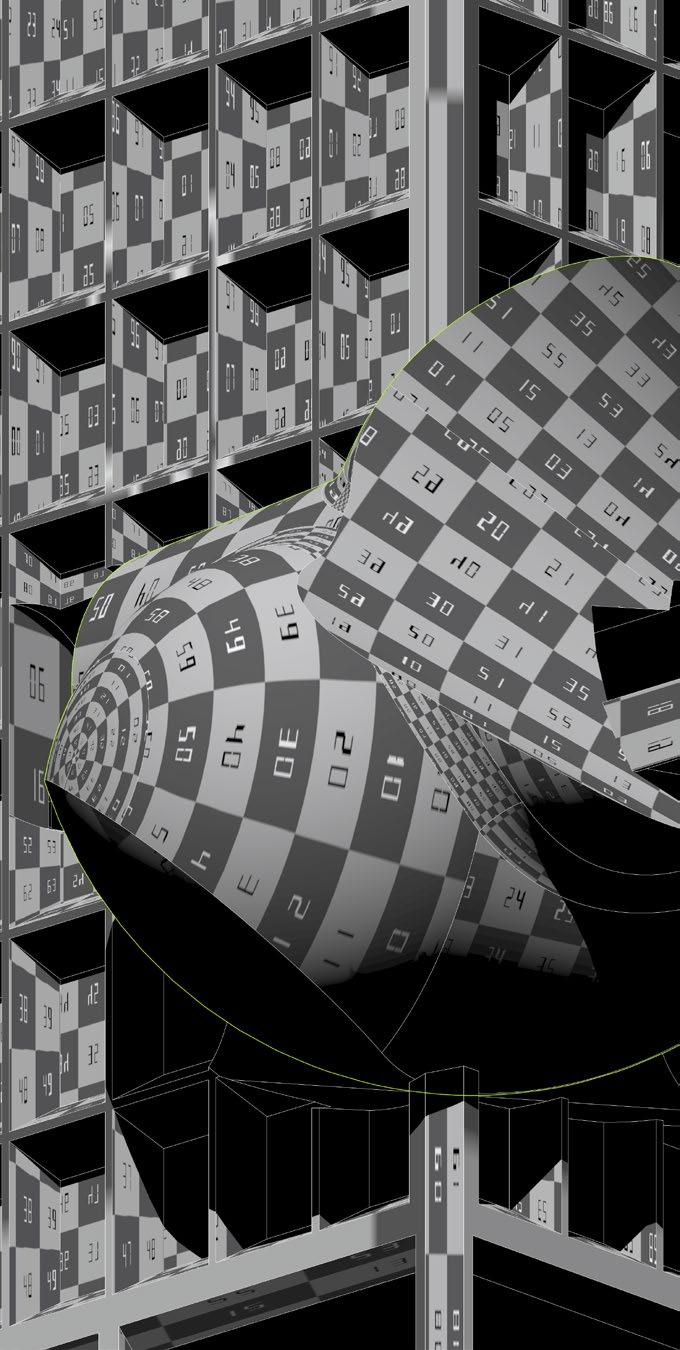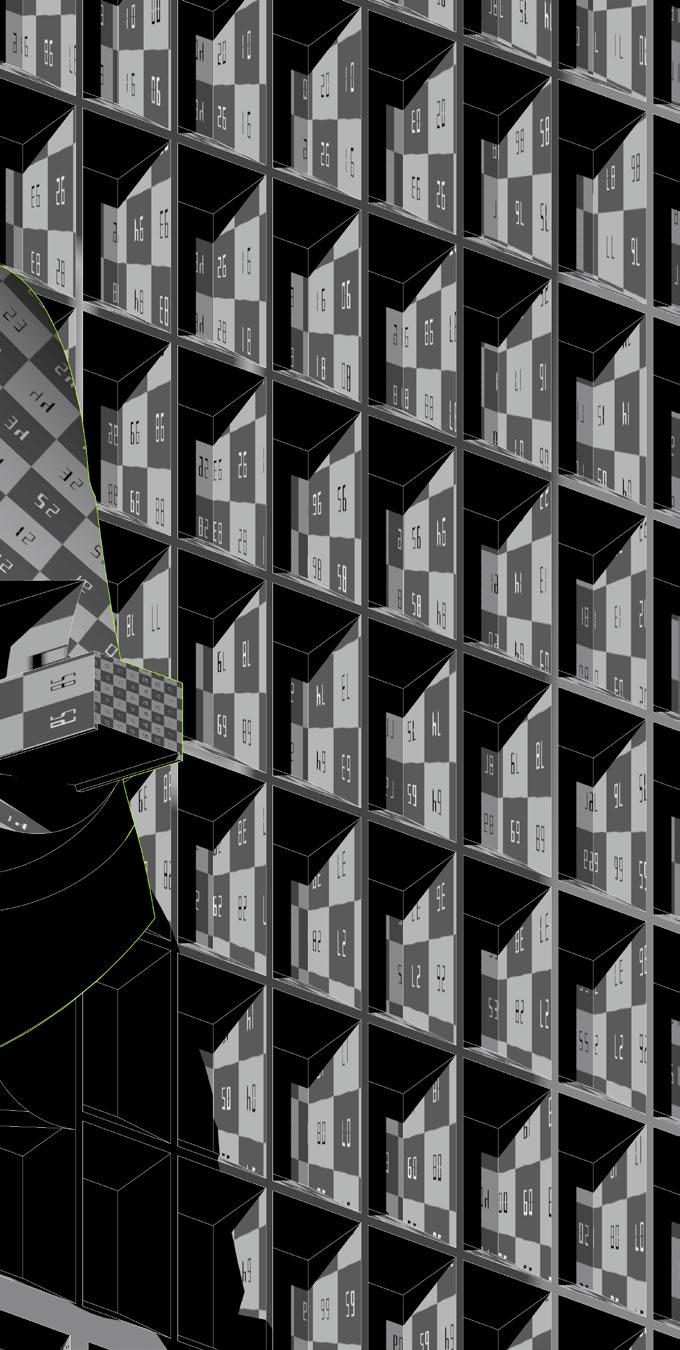Marginal Aesthetics Margi
Ian Fennimore
Project 056
Capitalocenery ��
Affect & Production ��
Commodity Central ��
005 Provocations Statement
Aesthetic Categories ��
Disruptive Temporalities ��
Spam Spam Spam ✉
Gimmicky Form ��
Awkwardness ��
Mm..Food ��
Modern Meat ��
As Seen on TV ��
Position(s)
Reactive Deuse ��
Novelty & Spectacle ��
Marginal Spaces ��
013 047
“Pencil Sharpener” Rube Goldberg
The position of architecture has been weakened by the development of capitalist, neoliberal tropes such as ‘(sus)tainbility’ and ‘adaptive reuse’. Through the proliferation of these agendas, the role of architectural practice has been largely co-opted as a form of capital investment for furthering corporate identities. In an effort to combat this, the thesis posits the reframing of the architectural gimmick as a satirical character capable of developing an identity and form of critique beyond its initial reading.
Ngai, Sianne. Our Aesthetic Categories: Zany, Cute, Interesting. Cambridge, MA: Harvard University Press, 2015.
...”contemporary zaniness is an aesthetic more explicitly
How does the of working in order to produce a new reading of architecture’s role in society?
“What is most essential to zaniness is its way of evoking a situation with the potential to cause harm or injury...”
How to capitalize on the ability for affect to stir a potentiality about a world beyond the capitalocene?
Kidd, Akari Nakai. Affect, Architecture and Practice: Toward a Disruptive Temporality of Practice. Abingdon, Oxon: Routledge, 2021.
The practice of architecture is system that is overstrained and thus, it begins to stutter and affirmatively through temporalities.
Typically operating on the scale of the beautiful and sublime, architecture has historically sought to produce totalizing affects through its mechanistic qualities. In today’s ‘hypercommodified, information-saturated, performance-driven’ postmodern, capitalist society, within which the relationship between the dissemination of culture and role of labor is becoming increasingly entangled, these aesthetic affects no longer track through these emerging socio-political convergences.1 Instead, more ambivalent and trivial affective experiences, such as the zany, become more indexical to the conditions of production and form that are so pervasive in today’s society. This thesis posits that a movement towards an architecture that embodies more equivocal affects must first reconsider the practice/process itself in the terms of this marginal aesthetic category.
To spatialize the affectively vague and indexical, the role of aesthetic affect in the process of architectural production must be foregrounded. Rather than considering space instantiated through form as an actor producing relationships, this project deals with the object as a character embedded in a temporality that becomes ‘thickened’ and allows space for an affective practice to persist along its conception. Architecture’s history as a discursive and introspective discipline (in contemporary practice and academy) has remained through the pervasive typological and antecedental thinking. These innately temporal mindsets lead to economies of exchange that are inherently capitalist, furthering the role of the discipline as an increasingly anthropocentric pursuit. An overwhelming teleological thinking also furthers the production of less productive aesthetic affects.2 Shifting towards a position of the zany gimmick allows for the conception of an architecture to be reconsidered as a process of ‘duration’ in which linearity is forgone in favor of a heterogeneous, and intrinsically performative, mode of creation.
Ngai, Sianne. Theory of the Gimmick: Aesthetic Judgment and Capitalist Form. Cambridge, MA: The Belknap Press of Harvard University Press, 2022.
The transition towards an architecture that denies a certain attitude towards far-reaching capitalist forms, it is imperative to develop a vocabulary that challenges the conception of the work. Firstly, the ‘gimmick’ is a capitalist form that mediates our aesthetic experience through its immediate nature of an over-represented but under-performing entity3. This mode of production serves as digressive critique of capitalism’s devices through irony. In this way, the gimmick, produced through an intermittent performance of making, embodies its zany potential as a new form of architectural production, experience, and critique. Then, in order to mutate the architectural gimmick beyond its inherently underwhelming nature, the ‘stutter’ and the ‘spam’, as forms of comedic and sporadic temporal conditioning, allows the duration of a way of making to germinate alternative forms of critique. Specifically, the idea of adaptive reuse or sustainability can become corrupted through an intentionally fragmented affect of production thus leading to the production of a different type of gimmick not postured by the same neoliberal forces that were originally engendered.
Acting much like an interdisciplinary double-agent, this thesis positions itself as an exploration of architecture, by architecture, and against architecture.
hectic panicky forceful nice boring slow cute sensational unpleasant alive repulsiveidle calm displeasing beautiful exhilarating serene frenzied dull restful monstrous tranquillazy rushed tranquil dreary exciting stimulating peaceful dissatisfyingunstimulating
Indexical aesthetic categories capable of tracking the transformation of experience due to their entanglement with emerging socio-political phenomena in late capitalist society*
Our Aesthetic Categories: Zany, Cute, Interesting Sianne Ngai, 2012
Trivial Forms of Aesthetic Affect... and Why Zany?
Sianne Ngai tracks the 3 aesthetic affects that she feels are indexical to our position in a hypercommodified society; the cute, the interesting and the zany. The significance of this new categorical outline lies in its ability to incite politically charged projects that deal in these trivial affects.
Here, trivial implies a certain proclivity of the aesthetic categories to stir up ambivalence through their nuanced concoction of certain implied relationships between labor, leisure, and commodity.
Although the cute and interesting will peep their marginal heads later in this investigation, they are not as productive in their deployment
For now, I will focus on the zany - the inherently performative, satirical mode of affective labor. In this text, Sianne Ngai positions the zany as an aesthetic of “nonstop acting of doing” which is inexorably tied to a “post-Fordist service economy” evoking the “performance of affective labor”.
This reading of the zany, and all of its perilous ADD, attaches it securely to the capitalocene and the modes of labor that have permeated our contemporary ways of living. Here. Ngai navigates a thoroughfare of work and play negotiated by the ways in which the zany draws upon ideas of gendered relations in late-capitalist life. Focusing on the marginal qualities of this aesthetic category allows for a wider range of its affect to be foregrounded in its expression; namely its proximity to a sense of peril, necessitation of strenuous and desperate activity, and ability to remain distantly comical through awkwardness.
The performative nature of zany becomes particularly applicable when moving beyond aesthetic judgment and towards means of production as an aesthetic undertaking, spurred about by the ways in which the affectual qualities can generate contents and engender the same material into them. precludes a subjectivity of aesthetic judgments of ‘being zany’ by embodying and calling upon the types of action precluded by this aesthetic category in order to reframe ways of working on an
zany
imbue a project/ investigation with the necessary sauce to channel the interesting and cute? And how its this useful for moving architecture towards a stance of post-ironic
See Also: Not Interesting: On the Limits of Criticism in Architecture [Atwood, Andrew]
Awkward Position [Zago, Andrew]
A Circumplex Model of Affect [Russel, James
“The earlier accounts of architectural practice subscribe to an economy of exchange reflective of the capitalist framework within which those framing them reside. Here is a human-centered, anthropocentric model of time, where operations are driven by, and privilege, the human experience. Further, productiveness is deemed generally to be governed by functional equivalence and framed by a teleological perception of architecture operant under a linear temporality.”
In their book, Affect, Architecture, and Practice: Towards a Disruptive Temporality of Practice, Akari Nakai Kidd presents a case for the discipline to deploy philosophy as a tool for rethinking the ways time impacts practice and the formulation of architecture[-al ideas]. Through figures such as Deleuze and Bergson, the temporal nature of architecture’s practice can become disruptive through an “unstable, hypersaturated moment... a dramatic multiplication of random or chance effects.” Through Bergson’s concept duree, or the extrusion of a typically flat time plane, the attention of time as a model of duration can be shifted towards its passing; a conceptual ‘thickening’ of the understanding of the linear, progressive procession that defines most architectural timelines.
This idea of the duree presents a continuous “continuity of becoming” in which physical logics are not tied together through spatial relationships but through experience. Duration, then, becomes something that traces the affects of moments through qualitative and heterogeneous differences. Constituent elements which are all ‘becoming’ thus form a temporal unity through their collective push through a conserved past experience and through present newness. This ‘push’ then becomes the site of investigation for this text when describing the temporal relationships brought upon by this conceptual thickening.
To develop the thickening, or extrusion, through the ‘push’ [or pull perhaps], the text explores the “AffectTime Vector” through the lens of Kwinter and Nietzsche within which the present, past, and future become increasingly entangled until they are inseparable. What this means for architecture is the increasingly
uncomfortable convergences that emerge in practice through streaming in the world must be taken as sites of investigation and extrospection, not triumph or avoidance.
sterr!
“While the concept of an affect-time vector is not yet embedded in architectural practice or architectural literature, it offers a way to consider practice as performed, with all its disruptions and the fragmentary nature of the heterogeneous occasions of experience.”
Here, the link to the zany emerges, as both begin to link contemporary convergences of practice/ work to an idea of affective performance within which one is able to read, reread, and rewrite through fragmented, happenstance and ambivalent moments or events. It is precisely the lack of clarity in these concepts that lay seeds for further actions.
Affect, Architecture, and Practice
Toward a Disruptive Temporality of Practice
Akari Nakai Kidd, 2021
So what about st-stutt-ut-. .. ing?
Stuttering, through the lens of the affecttime vector presents the beginning of a vocabulary which can allow the rethinking of the temporality of a zany practice. A stutter presents clear breaks through a continuum within which affect intensity is suspended, pressuring a move towards the future.
Through the projection from a present moment and towards the future, the stutter embodies an interstitial caricature that can become operative. In order to capitalize on the stutter in this way it is important to first reconsider the role of affect in a suspended temporality. Instead of posing as an empty interstitial grey area, the stutter must be reconsidered as an affective glue, holding the series of bits and pieces within a temporality together in a frozen state of anxiousness. As a mediator of time, the stutter can become an affective moment ripe with a zany potential.
Deleuze, in ‘He Stuttered’ refers to this action as an “affirmative disjunction” filled with embarrassment, discomfort, and... humor. He also refers to the stutter as a rhizomatous, or ‘growing from the middle.’ Perhaps, deployed through architectural practice, the stutter becomes a root system that begins to tie a series of disparate or disjunctive investigations in an unstable temporality.
The “affirmative disjunction” of the stutter throws the architect into a position of power over the stutter instead of a curiously immanent performer of it. A stuttering process might imply a shift away from homogeneous processional investigations of block massings, unilateral software pipelines, hand sketching and diagramming, bug models, parti[e]s, etc and in favor of a way of working that intentionally breaks from and integrates all strategies on the table in order to channel a satirical, uncomfortable, and winding affectual practice of architectural stuttering.
How can the idea of ‘stuttering’ be manifested in architecture and what kinds of ambivalent relationships does this present to the things being worked on (in)?
Where do temporal notions of misreading align with ‘awkward’ ways of working in order to produce trivial aesthetic affects moving beyond mere spectacle?
See Also: La Duree [Bergson, Henri]
A Thousand Plateaus [Deleuze, Gilles & Guattari, Felix]
Architectures of Time [Kwinter, Sanford]
SPAM SPAM
SPAM SPAM
SPAM SPAM
SPAM SPAM
SPAM SPAM
SPAM SPAM
SPAM SPAM
SPAM SPAM
SPAM SPAM
SPAM SPAM
SPAM SPAM
SPAM SPAM
SPAM SPAM
SPAM SPAM SPAM SPAM
SPAM SPAM
SPAM SPAM
SPAM
SPAM SPAM
SPAM SPAM
SPAM
SPAM SPAM
SPAM SPAM
SPAM SPAM
SPAM SPAM
SPAM SPAM
SPAM SPAM
SPAM SPAM
SPAM SPAM
SPAM
SPAM SPAM
SPAM SPAM
AN EMERGENCE OF THE POSTDIGITAL SPAM
SPAM TODAY IS OFTEN ASSOCIATED WITH THE ONSLAUGHT OF ELECTRONIC MAIL CAMPAIGNS INCESSANTLY DELIVERING UNWARRANTED ADVERTISEMENTS OR EXPLICIT CONTENT. EMERGING FROM THE DUST OF THE EVER EXPANDING DIGITAL CAPITALOCENE, SPAM PRESENTS A UNIQUE PHENOMENON AS AN EVOLUTION FROM A PRODUCT TO A PROCESS, BOTH GIMMICKS OF OUR CONTEMPORARY LIFE.
EMBODYING THE LITERAL GIMMICK, THE SPAM-AS-MEAT PRODUCT DOES A LOT IN TERMS OF ITS ABILITY TO PUSH PORK SHOULDER (A NOTORIOUSLY HARD CUT TO SELL) OFF THE SHELF BUT PROVIDES LITTLE NUTRITIONAL VALUE (OFTEN EVEN NEGATIVE). THE UBIQUITY OF SPAM ACROSS ITS 90 YEAR HISTORY HAS TRANSCENDED THE FORM OF A TYPICAL FOOD PRODUCT AND PUSHED IT INTO THE REALM OF THE GIMMICK. NOT JUST AS A MARKETING SCHEME THE ACHIEVES A LEVEL OF NOTORIETY, BUT A LITERAL FAILURE TO PRODUCE A SET OF (A) EFFECTS THAT WOULD JUSTIFY THE LEVEL OF EFFORT PUT INTO IT.
NGAI CITES THE ETYMOLOGY OF ‘GIMMICK’ COMING INTO FORM AT THE BEGINNING OF THE 20TH CENTURY, THE TIME SPAM WAS INVENTED AND BEGAN TO INCREASE IN POPULARITY BEFORE IT AIDED SOLDIERS IN WORLD WAR II.
INTERNET SPAM PLAYS A SIMILAR ROLE IN THE LIVES OF EVERYDAY PEOPLE; CONSCIOUS OF THE ITS UBIQUITY AT THE LEAST, INUNDATED BY IT AT WORST, AND NUMB TO ITS LARGER MEANINGS AS PLAY. ONCE CONFRONTED, HOWEVER THE AESTHETIC OF SPAM CREATES THE ‘DISSATISFACTION’ WHICH NGAI ARGUES MAKES THE GIMMICK SO POWERFUL.
BUT HOE DOES SPAM ENTER THE ARCHITECTURAL VOCABULARY?
TO CHANNEL ‘SPAM’ (v.) ONE WAY IS TO TAKE IT AT FACE VALUE. PERHAPS THE PRODUCTION OF AN ARCHITECTURE SEEKING A ZANY REPRESENTATION MUST SPAM ITSELF THERE. ALTHOUGH NOT NEW TO THE NATURE OF ARCHITECTURAL PRODUCTION, THE WAY IN WHICH SPAM CAN BE INTENTIONALLY CHANNELED THROUGH METHODS OF WILDLY DIFFERENT MEDIA/GOALS/ SCALES BEING CONSTANTLY ABANDONED.
ALTERNATIVELY, SPAM (n.) CAN BE READ AS ARCHITECTURE AT EVERY STEP OF THE WAY. THE ZANY ARCHITECT DOES NOT ARRIVE AT A SINGULAR CONCLUSION, BUT AN ARRAY OF DESIGNED SPAM.
How does the gimmick create real opportunity for the development of an architecture[-al investigation] capable of deploying trivial aesthetics in order to dismantle [insert capitalist villain here] institutional oppression in modern discourse?
In line with this thesis’ position towards a zany investigation through the rereading of practice/process, the gimmick becomes a goal to aspire to. Instead of formulating a position of neo-liberalist anxiety-induced capital mongering, the conscious development of something as a satirical moment indexing the very fuel it defies creates the space necessary to drive the conversation[s] it wishes to have.
The questions that arise from Ngai’s instantiation of the gimmick come mostly in the form of ‘how’s:
How does indexing capitalist labor inequities [in terms of production and affect] actually provide grounds for clear [through a lack thereof] articulations of critique?
How does one know they even formulating a gimmick? Can a gimmick be intentional or does it arise over time through reproduction? Where does intention sit in this?
How does this relate to architecture at all? Maybe building things that work is a gimmick that furthers our capitalist/ anthropocentric models and architecture just isn’t cool no mo’.
Theory of the Gimmick: Aesthetic Judgment and Capitalist Form
Sianne Ngai, 2020
Buy 1 Get 1 | Gimmicky Forms
In her 2020 book Theory of the Gimmick, Sianne Ngai puts form the gimmick as another marginal [and therefore indexical] aesthetic phenomenon that becomes more pervasive than the aesthetic categories presented earlier (the zany, the cute, and the interesante). The gimmick, however, moves beyond these categorical indecises for its pervasive nature and ability to expose not just labor relations or but rather a the capitalist large. reading of the a microcosm of the regime overarticulated status but nature and deliver a lack of substantive also serves another towards a vernacular can operate at a level more sublime. Sianne Ngai emphasizes
rise to the gimmick’s compromised aesthetic” and thus provide grounds for developing dialogues that critique the very mechanisms giving rise to the world’.
According to her, the gimmick (in addition to the other 3 categories) can help bring back neglected common aesthetic judgments and allow them to achieve a similar level of significance.
See Also:
Gimme More: On Sianne Ngai’s “Theory of the Gimmick Andrew Koenig, 2020
Zago’s graph of success and expertise, with the asymptote of the ironic gaze causing a break between mastery and authenticity
The assertion of the awkward gimmick as inexorably tied to mastery, allowing it break the ironic wall. A certain ‘price of entry’ , however, is necessary as the gimmick is risky business . Its predisposition for underperformance makes it a particularly difficult yet rewarding perversion, requiring another barrier of entry to pass the iron(ic) curtain.
In ‘Awkward Position’, Andrew Zago introduces the position of the awkward as a means of transcending traditional forms ofthismasteryandauthenticityinarchitecture.Thistextissignificantfor investigationforitsarticulationofthedeclineofironicinterms ofmasteryandtheabilityforarchitectstodevelopcertainaffects through various ways of working. Zago contends that the role of irony in postmodern critique has dismantled the relationship between authenticity and mastery that make architecture so palpable. To combat this, there have been different disciplinary developments that have tried to negotiate, or completely decouple, the space between ‘success’ and expertise’, which ultimately leads to a finite development of architectural technique capable of only slightly surpassing the asymptote.ironic Zago’s assertion of the awkward as a form of post-ironic authenticity is a deployable conception towards the formation of the zany gimmick. However, it is important to consider what ‘authenticity’ is really doing in terms of this investigation. For Zago, authenticity is directly linked to expertise and ‘success’ developed through an architecture with “gravity and depth”. However, challenging these qualities as the proprietors of ‘success’ can allow mastery and craft to be deployed beyond these engendered ideas. Another point of contention in the text is the role of the “ironic gaze” in the development of a schism between mastery and production within the discipline. To combat this, the “awkward” becomes a mutation of technique, embracing perverse and intentionally ‘incorrect’ methods of working, which can create trivial aesthetic affects. As Zago states, the awkward can “tactically undermine fine-tuned skills in an attempt to define new and unsettling aesthetic territories.”
MASTEROFNONE
Through this position, the gimmick can become a means of manifesting the awkward. But, the instantiation of this alternative must be presented through the lens of mastery. The gimmick embodies its status as an inauthentic form, so its redeployment as a form of ‘authentic’ (or perhaps poignant or relevant) critique must be done through mastery. In fact, the top-down nature of the zany gimmick becomes challenged through the awkward position as a new form of mastery inviting accidents, improvisations, and intentionally weak concepts that can be channeled through unsuspecting arrangements. Architecturally, the project of the reframed gimmick can present itself in this awkward framework, but be positioned towards a different set of circumstances that both channel the ironic gaze, but accept mastery through this marginal lens to move beyond its prescribed, finite nature.
See Also: Real What? Andrew Zago, 2005 Speaking of Architecture... Robert Somol, 2023
The discussion of mastery, irony, and authenticity from Zago’s Awkward Position can be developed through the prolific rapper, producer and super villain, MF DOOM. DOOM positions himself within the genre of hip hop much like this thesis sees itself relative to architecture; strangely opposed but deeply ingrained and invested in its ability to produce meaningful contributions to the world. Much like Zago’s “ironic gaze”. DOOM is a canonical figure in rap but describes the medium as his own enemy.
However, MF DOOM’s zany caricatures make him possibly the most aesthetically marginal of all of rap’s history. His approach to mastery, through the various aliases, roles and styles he embodies as the zany figures allows his ironic stance to pierce beyond the finite mastery limit. On 2004 album Mm..Food (an anagram of MF DOOM), every track’s title and sparse lyrical content references some food product. This gimmicky approach would most likely fall flat in the hands of a less skilled emcee, but DOOM’s ability to appropriate flows and structures with literal interpretations and slight mutations creates an engaging affect throughout the project’s 49 minute runtime. The flipping of samples, use of skit excerpts and recognizable flows over intentionally ‘off-beat’ beats builds textual timbre through a nuanced but also straightforward lyrical tirade.
Ben Wasson, 2021
How can gimmick produce a new space to occupy beyond mere spectacle and novelty?
SUPERVILLAINY: ON THE CONFLATION OF IRONIC MASTERY & PRODUCTIVE CRITIQUE
Famously referred to as ‘your favorite rapper’s favorite rapper’, MF DOOM has developed an infamous reputation through his unique song structures and awkward timing. These tactics, each particularly trivial, culminate in an aesthetic affect that DOOM uses to critique the ‘rap game’.
As the self-proclaimed ‘supervillain’, one of DOOM’s goals was to use hip-hop as a medium to critique hip-hop (his other goal was “cash, and cash only”). This ironic position has been attempted by other rappers but has fallen flat (Iggy Azalea’s D.R.U.G.S., Macklemore’s White Privileged II, or Eminem’s The Way I Am) due to critiques of false self-righteousness, whiny hypocrisy, or general lack of self-awareness. MF DOOM is able to evade these types of allegations through his enigmatic authenticity, overtly satirical lyrics and deeply nuanced word play (largely considered one of the best in this category).
DOOM’s deeply layered rhyme schemes and precarious production style carved a new representation of mastery in hip hop. These, along with his masked personas, allowed him to tackle contemporary social and political issues in ways hip-hop had never seen before; a zany way. The marginal aesthetic perversions DOOM deployed so masterfully allowed him to do what he never said he set out to do; develop social critique of a post-colonial, capitalist west without being an overtly ‘political rapper’
The efficiency of killing
Slaughterhouses: Meat is Modernism
these directly metaphoric links to all things modern and capitalist, the abattoir becomes a ripe subject.
The Slaughterhouse as an Architectural Typology
In the development of the abattoir through modern history, the role of architecture has been increasingly diminished. As Wiles notes, “The Meat and Livestock Commission’s Slaughterhouse Design Manual, an otherwise comprehensive and fastidious document, refers only twice to the envelope of the buildings it describes...” As a building typology devoted to progressing the efficiency of taking life, aesthetics have taken a back seat.
The abattoir has been pushed further into the realm of ubiquity, erasing any identifying architectural marks in an attempt to throw the building into a state of invisibility. Probably for the best.
Although spaces of gruesome death, slaughterhouses possess a history that is indexical to systemic capitalist issues, ones similar in type to those Sianna Ngai points to in her aesthetic categories and gimmicks.
The architecture of the abattoir echoes sentiments of the modern movement. A “clean” and unassuming exterior with a light, open, and airy interior promoting an image of health and posterity despite its deadly program. As a precursor to the assembly line, the late 19th century slaughterhouses in Cincinnati began perfecting the type of in-line efficiency that heralded the development of modernism. Through
Endemically, the slaughterhouse is tied to a strictly functional and segregated nature. Processing live animals into product requires a level of sanitation and care to ensure contamination does not run rampant. After all, loss of capital would ruin the system. Wiles compares the organization of the slaughtering to that of an airport, “... the abattoir comes to resemble an airport, with death and evisceration replacing check-in and security. The biggest schematic difference between the facilities is the lack of an ‘arrivals’ hall. There are only departures.”
In this way, the slaughterhouse can be read, architecturally, as an infrastructural and engineering problem, predicated on the ability of the designers to plan for a set of contingencies. However, instead of a set of contingencies separating people into groups, the abattoir separates life and death, identity and commodity.
Perhaps through this lens, the slaughterhouse can be read as an underrepresented icon in the sphere of systemic, institutional oppression. The operations of redlining, mental hospitals, and especially the prison system mirror that of th e slaughterline, efficiently stripping identity and meaning from those who enter the doors. Much like the gimmick, the resultant matter of the slaughterline is ubiquitous, systemic, and under-performing.
How then, does the zany, the gimmick, and the stutter provide a means of transforming the slaughterhouse as a way of critique? And what internalized issues are worth foregrounding?
See Also: Slaughterhouses Design Manual
Abattoir Development: Opinions and Sized Abattoirs
“When responsibility for... problems is individualized, there is little room to ponder institutions, the nature and exercise of political power, or ways of collectively changing the distribution of power and influence in society.”
cause[s] is/ are (most likely secret option ‘all of the above) it is more helpful to ponder solutions to the unknown problem.
How can architecture be deployed in a way that transcends these traditional media barriers in order to drive a conversation about political change? Would anyone even care?
Meat in the Media: What Do We Know About Media Coverage of Animal Agriculture, Climate Change, Diet and Lab-Grown Alternatives James Painter, 2020
They’re
Controlling Us
The Livestock, Environment and People (LEAP) organization at Oxford conducted a study on US and UK media sources from 20062018 (following the FAO’s report “Livestock’s Long Shadow, 2006) which documented the volume and context of animal agriculture and cultured meat in prevalent outlets (The Guardian, Telegraph, NY Times, and WSJ). In this paper, they found that media coverage of animal agriculture is not only very small in volume, but it is also much more consumer-focused.
a larger, more internalized problem with mass media; who pays for all this crap?
Large industry corporations tend to also be large donors/funders of large media corporations. Even if large publications, like The Guardian, are not being bankrolled by global conglomerates, much of the media attention of animal culture is prompted by industry sources, whose representatives are also the most quoted on this subject.
Animal agriculture accounts for ~15% of greenhouse emissions globally, the same as the transportation sector.
Much of the media coverage around this fact is decidedly negative or blame-inducing, trying to determine the nature of animal agriculture accounting being as emissive as the entire transportation sector. And through this media, systemic governmental responsibility is mentioned five times less than consumer responsibility. This focus on individual climate action over policies targeted at fundamental institutions is endemic of our current political atmosphere. Divisive agendas that only serve to segregate the ‘virtuous’ and the ‘wicked’ are not only distracting from the action required, but specifically inhibiting the ability for significant paradigm shifts to occur. But why would this be? The authors cite a multitude of reasons as to why this may be, but one of the main reasons is
Furthermore, the LEAP study concluded that there was a larger volume of positively-spun arguments than cautionary ones (especially when dealing with cultured meat), which is odd considering the staggering contribution to climate change and other negative connotations commonly held against animal agriculture.
Other possible causes for the lack of media presence cited in the conclusions of the study are the idea of promoting dietary change is a “harder sell” in media, a ubiquitous hesitation to challenge powerful lobbying interests in this sector, the maledominated industry being more pro-meat, general trends towards ‘individualism’ in media and culture (i.e. not blaming systemic issues just Taylor Swift’s plane activities), and “ag-gag” laws that prohibit the documentation and release of records of agricultural institutions.
See Also:
Animal Agriculture and Climate Change in the US and UK Elite Media: Volume, Responsibilities, Causes, and Solutions
Silje Kristiansen, James Painter & Meghan Shea, 2020
You can’t save the climate by going vegan. Corporate polluters must be held accountable. Michael E. Mann & Jonathan Brockopp, 2019
The Media of Meat
Reactive Deuse
Reconstruing adaptive reuse as a means of productive critique
1. The ubiquity of sustainable tropes, namely adaptive reuse and greenwashing, has diminished a productive architectural excursion to a gimmick. A reorientation of the gimmick through trivial aesthetic practices can deploy it as a useful digression towards an authentic architecture.
2. Adaptive reuse has been cast a pervasive strategy with widely accepted benefits, but it is part of a larger weakening of architecture’s poignant potential through the touting of ‘sustainable’ practices postured beyond critique. While the obvious benefits of ‘sustainable’ practices are desirable, the perversion of adaptive reuse practice will allow it to transcend the plasticity of ‘sustainable practice’.
3. “Reactive deuse” can serve as the gimmicky reframing of adaptive reuse through its commitment towards alternative goals. Partly, the idea of dissolving strictly programmatic investigations can lead to an architecture with a different assertion of ‘authenticity’ and ‘success’.
2. Although typically seen as architectural affects, the zany an opportunity to lengthen these creating space for sophisticated
1. The contemporary gimmick becomes a tactic, deployed through mastery using novelty and spectacle in a nuanced and targeted way. Through this, the role of architectural elements such as ornament become misconstrued and subverted in ways that produce new affects.
Novelty & Spectacle
The awkward gimmick’s ability to develop sensibilities beyond its fragile exterior.
weak or immediate zany gimmick provides these concepts, sophisticated critique.
3. Traditional notions of mastery and technic are what liberate the gimmick from the mire of shallow exploration. Disciplinary investigations rooted in conventions of space and object making that open themselves to critical, but productive, accidents generate alternatively equivocal affects.
1. Trivial aesthetic categories, such as the zany or the cute, operate through inherently contradictory feelings, leaving them open to meanings beyond direct reading. This state of ‘suspended agency’ then allows for an indexical relationship between an object and its origins to drive a critical reinterpretation.
2. In the discipline of architecture, totalizing aesthetic affects (beauty, sublimity, etc.) were typically sought after through canon. Today, more endemic and systemic issues can be addressed through the lenses that reflect the contradictory nature of those issues.
Marginal Spaces
A commitment to ambiguous aesthetic affects as means of invoking alternative characters.
3. The implementation of gimmick as a critique capitalist mechanisms requires a project rooted in an aesthetic territory capable of referring to the subject matter in a directly ambiguous way. Marginal aesthetics begin to index the status of labor, capital and trend which allowed for the development of gimmick in the first place.
Graphic Exploration
Painterly Experiments
Total Works, Ben Pennell
The bas relief becomes a field for the affectively vague. As an empty canvas , the proliferation of unfiltered nothingness smears the surface. Saying nothing, doing nothing is precisely the way to do everything. We must channel ambivalent oxymorons to develop the awkward symptoms so aptly discursive.
“So let us cast aside and do away with the pitiful closet formalist - an amateur who is afraid to commit to even as much as a line which is seeable on her finish facade. See how she tucks away her unresolvedly perverse geometric fantasies within the protective ambiguity of the building’s guts. The uglier, stupider, more undesigned her facade appears, the smarter some would presume these internal components. Like the proverbial genius who cannot spell, or perhaps even the famed architect who cannot draw, a defiance of conservative order is meant to suggest another higher order of intelligence at work. But pay attention, this simple grift is not unknown to the closet formalist. If something appears ugly and stupid, it most likely is.
Soon we will all see that function is a fairy tale; soon all will declare with certitude that the facade, even if wafer-thin, is the only thing which does not lie. So think like a painter.
In their seminal work book, Learning From Las Vegas: The Forgotten Symbolism of Architectural Form, Denise Scott Brown, Robert Venturi and Steven Izenour present a taxonomy of architectural production through the assertion of the ‘duck’ and ‘decorated shed’. The duck architecture is epitomized by a building shaped like an actual duck, which also sells duck-related items. This mirroring of program as literal symbol characterizes an architecture unabashedly outward, calling itself out in a in a gimmicky way.
Learning From Las Vegas
The duck’s immediacy makes it attractive. It is a form which generates interest through its seemingly effortless comprehension. Instead of demanding a level of interpretation and close reading to reveal a deeper reading, the duck is unashamed of its lack of meaning. Or perhaps its ‘meaning’ lies in its ability to move beyond the desire for this in the first place. In either case, duck architecture draws parallels to ‘green architecture’ in the meaning of many of these sustainable practices deals in greenwashing and marketing slapsin-the-face. These two gimmicky forms present ground for reinterpretation and contamination through their own literal mechanisms.
Denise Scott Brown, Robert Venturi, Steven Izonour, 1972





